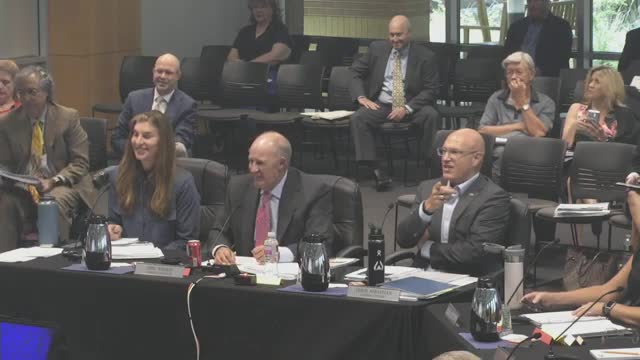Water management experts tackle evaporation crisis in Texas
August 23, 2024 | Lower Colorado River Authority (LCRA), Departments and Agencies, Executive, Texas
This article was created by AI summarizing key points discussed. AI makes mistakes, so for full details and context, please refer to the video of the full meeting. Please report any errors so we can fix them. Report an error »

During a recent government meeting, officials discussed critical issues surrounding water management and conservation strategies in the face of ongoing challenges such as evaporation and invasive species.
One significant topic was the impact of zebra mussels on water infrastructure. Officials noted that these invasive species can latch onto chains used for buoys, causing them to sink and necessitating regular maintenance to ensure they remain functional. This highlights the ongoing struggle to maintain water quality and infrastructure in reservoirs.
The conversation also touched on the complexities of measuring water loss within reservoir systems. Participants emphasized the need to account for various factors, including seepage and evaporation, which complicate long-term water supply estimates. The discussion underscored the importance of accurate data collection and analysis to inform future water management plans.
In addition, the meeting highlighted collaborative efforts with institutions like NASA and Texas A&M University to enhance water management strategies. Officials praised the rigorous peer review process involved in these studies, aiming to ensure that the findings are authoritative and beneficial for water management across the western United States.
Innovative solutions to combat evaporation were also explored. While some unconventional ideas, such as using films or floating objects to reduce evaporation, were mentioned, officials acknowledged the challenges posed by recreational use of lakes and potential environmental impacts. They emphasized the importance of balancing public safety, environmental health, and water conservation.
The meeting concluded with a focus on practical measures, such as the use of pool covers to mitigate water loss from private swimming pools, suggesting that immediate actions can be taken to address water conservation at the community level. Overall, the discussions reflected a proactive approach to tackling water management challenges in the region.
One significant topic was the impact of zebra mussels on water infrastructure. Officials noted that these invasive species can latch onto chains used for buoys, causing them to sink and necessitating regular maintenance to ensure they remain functional. This highlights the ongoing struggle to maintain water quality and infrastructure in reservoirs.
The conversation also touched on the complexities of measuring water loss within reservoir systems. Participants emphasized the need to account for various factors, including seepage and evaporation, which complicate long-term water supply estimates. The discussion underscored the importance of accurate data collection and analysis to inform future water management plans.
In addition, the meeting highlighted collaborative efforts with institutions like NASA and Texas A&M University to enhance water management strategies. Officials praised the rigorous peer review process involved in these studies, aiming to ensure that the findings are authoritative and beneficial for water management across the western United States.
Innovative solutions to combat evaporation were also explored. While some unconventional ideas, such as using films or floating objects to reduce evaporation, were mentioned, officials acknowledged the challenges posed by recreational use of lakes and potential environmental impacts. They emphasized the importance of balancing public safety, environmental health, and water conservation.
The meeting concluded with a focus on practical measures, such as the use of pool covers to mitigate water loss from private swimming pools, suggesting that immediate actions can be taken to address water conservation at the community level. Overall, the discussions reflected a proactive approach to tackling water management challenges in the region.
View full meeting
This article is based on a recent meeting—watch the full video and explore the complete transcript for deeper insights into the discussion.
View full meeting
